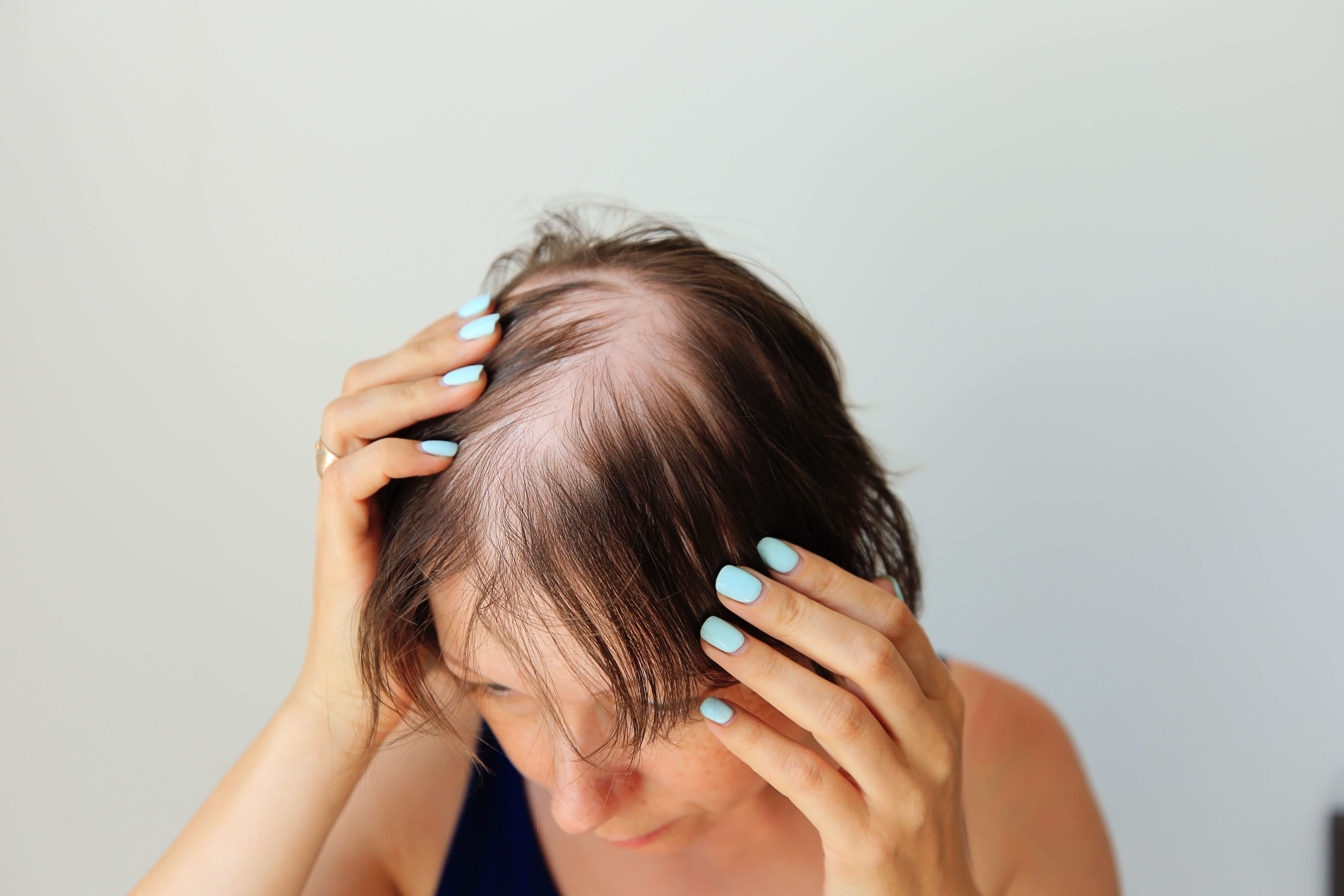- Acne
- Actinic Keratosis
- Aesthetics
- Alopecia
- Atopic Dermatitis
- Buy-and-Bill
- COVID-19
- Case-Based Roundtable
- Chronic Hand Eczema
- Drug Watch
- Eczema
- General Dermatology
- Hidradenitis Suppurativa
- Melasma
- NP and PA
- Pediatric Dermatology
- Pigmentary Disorders
- Practice Management
- Precision Medicine and Biologics
- Prurigo Nodularis
- Psoriasis
- Psoriatic Arthritis
- Rare Disease
- Rosacea
- Skin Cancer
- Vitiligo
- Wound Care
News
Article
Thyroid Disorders and Their Link to Alopecia Areata
Author(s):
Hypothyroidism and Hashimoto's thyroiditis were found to significantly increase the risk of developing AA, unlike hyperthyroidism.
Image Credit: © M+Isolation+Photo - stock.adobe.com

Alopecia areata (AA) has a lifetime prevalence of approximately 2% globally, with most cases occurring in individuals under 20 years old. Notably, around 25% to 50% of patients experience their first episode before reaching this age. While the condition primarily affects hair, it can also lead to changes in the nails, such as pitting and roughness. Importantly, AA is not merely a cosmetic issue; it significantly impacts patients' mental health, often resulting in decreased self-esteem, social anxiety, and depression.1
The Link Between Thyroid Diseases and AA
Thyroid diseases, including hypothyroidism, Hashimoto's thyroiditis, hyperthyroidism, subacute thyroiditis, and Graves' disease, are prevalent endocrine disorders that can disrupt various bodily functions, including those related to skin and hair. Research has shown a correlation between thyroid dysfunction and various dermatological conditions, including AA. Observational studies have suggested that individuals with thyroid disorders may have a higher incidence of AA, although these studies often suffer from limitations such as small sample sizes and a lack of comprehensive data analysis.
Recent studies have indicated potential genetic links between thyroid diseases and autoimmune conditions, including AA. This highlights the need for clinicians to consider the potential interplay between thyroid health and skin disorders like AA.To further investigate this relationship, recent research employed a 2-sample Mendelian randomization (MR) approach, which analyzes genetic variants associated with specific diseases. This method reduces the impact of confounding variables, providing a more robust assessment of causal relationships.2
Study Methods and Results
In this study, researchers examined the associations between several thyroid diseases and AA using data from genome-wide association studies. The findings revealed that hypothyroidism, Hashimoto's thyroiditis, and subacute thyroiditis significantly increased the risk of developing AA, while no causal relationship was identified between hyperthyroidism or Graves' disease and AA.
The study’s methodology involved selecting single nucleotide polymorphisms as instrumental variables for analysis. Researchers found the results indicated a positive causal relationship, particularly for hypothyroidism and Hashimoto's thyroiditis, suggesting that these conditions could predispose individuals to AA.
Clinical Implications
For clinicians, researchers stated these findings underscore the importance of a comprehensive evaluation of patients presenting with AA. Given the strong association with thyroid diseases, particularly hypothyroidism and Hashimoto's thyroiditis, the study encouraged clinicians to consider thyroid function tests in patients with AA. Researchers stated that identifying and treating thyroid dysfunction may not only alleviate the symptoms of thyroid disease but could also improve outcomes for patients with AA.
Future Directions
While this study provides valuable insights into the relationship between thyroid diseases and AA, researchers stated that further research is needed to elucidate the underlying mechanisms. They suggested that exploring how thyroid dysfunction might influence immune responses or inflammatory pathways related to hair follicles could yield new treatment strategies. Additionally, the study stated that further studies should aim to replicate these findings in diverse populations to confirm their generalizability.
Researchers concluded that the emerging evidence linking thyroid diseases with AA highlights the need for clinicians to adopt a holistic approach when managing patients with these conditions. By recognizing the interplay between endocrine health and autoimmune disorders, they stated that healthcare providers can improve patient outcomes and enhance quality of life for those affected by alopecia areata. Regular screening for thyroid issues and a multidisciplinary approach to care could be key in addressing both the physical and psychological aspects of this complex relationship.
References
- Marahatta S, Agrawal S, Adhikari BR. Psychological impact of alopecia areata. Dermatol Res Pract. 2020;2020:8879343. 2020. doi:10.1155/2020/8879343
- Zhao Y, Guo F, Guo M. Thyroid dysfunction and alopecia areata: A genetic prediction causality analysis study. Skin Res Technol. 2024;30(10):e70063. doi:10.1111/srt.70063











